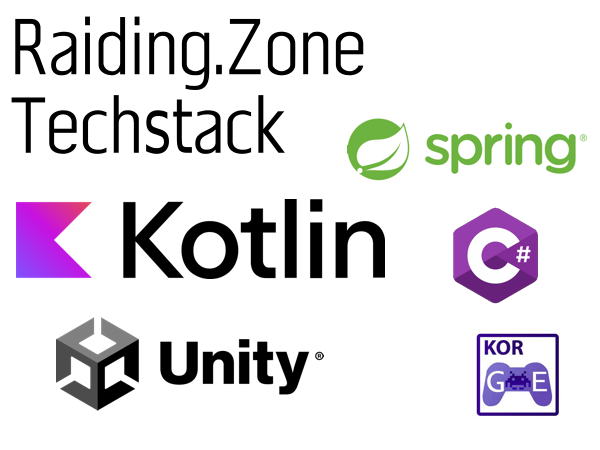
About a year and a half ago, I started my game programming journey. I am somehow confident in programming Kotlin and liked the idea of a complete game in my favorite language. My was to make a multiplayer game where you fight together to kill a boss. I played a lot of World of Warcraft in the old days, but didn’t like the amount of work I had to put in to be able to play my favorite part of the game. So to build this game, I needed technology for a game server and frontend.
My professional tech stack always evolved around Spring-Boot backend programming, and so I was very quick to chose it for this project as well. Some said it would be too bloated and slow for this purpose, but I didn’t have any problems getting the wanted performance. The server has a tickrate of 33 updates per second, and this loads just one of the 8 cpus on my machine.
I have to say I really love Kotlins Coroutines. Concurrency is hard, and concurrency that should be real time in the best case is a complete mess if you just work with threads. I know that coroutines are not real time and the delay() method provides no guarantees that it really waits the wanted amount. In Spite all this it works better than I expected as long as the whole system doesn’t have much load the Kotlin coroutine timing seems almost magical correct.
I decided to use Websockets for communication. The reasons behind this were primarily to be able to host the game server with just a http loadbalancer. My game should also be runnable in browser, to allow a quick and uncomplicated entry into the game. Later I learned that because of websockets it was much easier to port to android too. (You don’t need any elevated permissions)
Frontend was somehow a more difficult story. There is a Kotlin game engine: Korge. I have to say, it was awesome to prototype and trying out things, while I was new to game programming. The problems appear if you want to implement more sophisticated features like complex particles, z-indexing, camera or performance tuning. That, when I decided to rewrite my complete frontend in Unity to get more options and build a more compelling experience.
That created a dear problem. I had to rewrite the whole code in C# and had to find a possibility to not duplicate the multitude of data structures. I love the Kotlin annotation processor kapt and I used it extensively in other projects beforehand. At first, I only exported the raw data structures and used them in the c# code. One mayor advantage is, that if you ignore Kotlin’s nullability it is quite compatible to c#. Overtime, I also generated rest-clients and json-deserializers with the annotation processor and am really satisfied with the result. I will write another blogpost detailing the technology and code used for this.
Performance was always a main consideration of my game development journey. I aim to make my game run smoothly on any system that has 2 CPU cores. To accomplish this graphically was a fairly easy task because I don’t have any talent when it comes to digital art. The game doesn’t have any ray-tracing or overly extensive physical calculations. All the relevant heavy computation are made on the game server.
The main performance challenge was to get the gamestate to the clients. I started with whole gamestate updates and transported all data 30 times per second. But as the development processed further and the gamestate got more complex the deserialization would take 3 client cpu cores to keep up with the updates. This is definitely unacceptable because I cannot assume everyone has an 8 core system with 4ghz each core.
That’s why I moved to delta compression. I evaluated JSON delta compression, but neither Spring-Boot nor Json.Net in Unity has a sophisticated Support for this. So I chose semantic delta updates, and I would suggest it to anyone who stands to make this choice. There are per definition only a certain number of different updates a game can make. In the end I have only 11 different payloads, and they are all a lot smaller than the initial gamestate that would take up to 3mb. There is still potential if I wanted to reduce sizes further, but right now the game runs with smoothly >500fps on my machine where 60 would be enough.



I am very impressed to see your post. and I want to share some information with you about Crafting a concise and compelling abstract is crucial for summarizing your research effectively. Our team of experienced academic writers specializes in creating abstracts that highlight the key elements of your dissertation, including the research problem, methodology, results, and conclusions. For more info visit https://academized.com/dissertation-abstract-help We ensure that your abstract is clear, engaging, and meets academic standards. By focusing on the essence of your research, we help you present a strong overview that captures the attention of your readers.